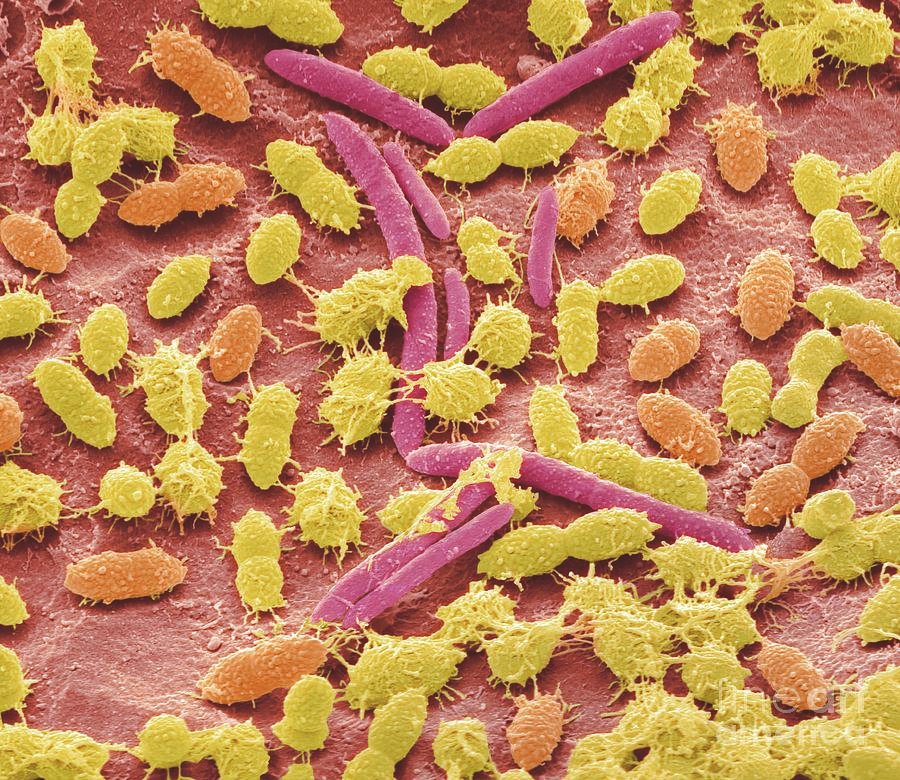Viruses and bacteria are two types of microorganisms that are often misunderstood and confused with each other. Despite their microscopic size and ability to cause diseases, viruses, and bacteria are fundamentally different in many ways, from their structure and reproduction methods to their roles in ecosystems and the diseases they cause. Understanding these differences is crucial for various fields, including medicine, microbiology, and public health. This comprehensive article will explore how viruses differ from bacteria apex, delving into their distinct characteristics, life cycles, interactions with hosts, and implications for human health.
Structural Differences

Bacteria: The Prokaryotic Microorganisms
Bacteria are single-celled organisms that belong to the domain Prokaryota. This means they lack a true nucleus and other membrane-bound organelles. Their cellular structure is relatively simple yet highly adaptable, allowing them to thrive in various environments, from extreme heat to intense cold and even in highly acidic or alkaline conditions.
Vital Structural Features of Bacteria:
- Cell Wall: Most bacteria have a rigid cell wall made of peptidoglycan, which provides shape and protection.
- Cell Membrane: Bacteria have a plasma membrane beneath the cell wall that regulates the flow of substances in and out of the cell.
- Cytoplasm: The interior of the bacterial cell contains cytoplasm, a gel-like substance where cellular processes occur.
- Ribosomes: Bacteria contain ribosomes for protein synthesis, although smaller than those found in eukaryotic cells.
- Genetic Material: Bacteria have a single circular chromosome in a nucleoid region. They may also have plasmids, which are small, circular DNA molecules.
Viruses: The Obligate Intracellular Parasites
Viruses, on the other hand, are much simpler than bacteria. They are not considered living organisms because they cannot carry out metabolic processes on their own. Instead, viruses are obligate intracellular parasites, meaning they must infect a host cell to reproduce.
Vital Structural Features of Viruses:
- Genetic Material: Viruses contain either DNA or RNA, which can be single-stranded or double-stranded. This genetic material carries the information necessary for the virus to reproduce.
- Capsid: The viral genome is enclosed in a protein coat called a capsid, which protects the genetic material and aids in the infection of host cells.
- Envelope: Some viruses have an outer lipid envelope derived from the host cell membrane, which contains viral proteins that help the virus attach to and enter host cells.
Reproduction and Life Cycle
Bacterial Reproduction: Binary Fission and More
Bacteria reproduce primarily through binary fission, where a single bacterial cell divides into two identical daughter cells. This relatively straightforward process allows for rapid population growth under favorable conditions.
Steps of Binary Fission:
- DNA Replication: The bacterial chromosome is replicated.
- Cell Growth: The cell grows and elongates.
- Segregation: The two copies of the chromosome are separated.
- Division: The cell membrane and cell wall pinch inwards, dividing the cell into two.
In addition to binary fission, bacteria can exchange genetic material through processes such as conjugation (transfer of DNA between two bacterial cells), transformation (uptake of free DNA from the environment), and transduction (transfer of DNA by a bacteriophage, a virus that infects bacteria).
Viral Reproduction: The Lytic and Lysogenic Cycles
Viruses cannot reproduce independently and must hijack a host cell’s machinery to produce new viral particles. Viral reproduction involves two primary cycles: the lytic and lysogenic cycles.
The Lytic Cycle:
- Attachment: The virus attaches to a specific receptor on the host cell’s surface.
- Penetration: The viral genetic material is injected into the host cell.
- Biosynthesis: The host cell’s machinery replicates the viral genome and produces viral proteins.
- Assembly: New viral particles are assembled from the replicated genetic material and proteins.
- Release: The host cell lyses (bursts), releasing the new viruses to infect other cells.
The Lysogenic Cycle:
- Attachment and Penetration: Similar to the lytic cycle.
- Integration: The viral genome integrates into the host cell’s DNA, becoming a provirus.
- Replication: The provirus is replicated along with the host cell’s DNA during cell division.
- Induction: Under certain conditions, the provirus may exit the host DNA and enter the lytic cycle, producing new viral particles.
Genetic Material and Evolution
Bacterial Genetics and Evolution
Bacteria have a relatively simple genome, typically a single circular chromosome. However, their ability to acquire new genetic material through horizontal gene transfer (HGT) allows for rapid adaptation and evolution. HGT occurs through three main mechanisms: conjugation, transformation, and transduction. This genetic flexibility enables bacteria to develop antibiotic resistance quickly, adapt to new environments, and evolve new metabolic capabilities.
Viral Genetics and Evolution
Viruses exhibit a wide range of genetic diversity, with genomes composed of DNA or RNA, single-stranded or double-stranded, and linear or circular. High mutation rates and recombination events drive viral evolution during replication. RNA viruses have high mutation rates due to the lack of proofreading mechanisms in their replication enzymes. This rapid evolution allows viruses to adapt quickly to host defenses and environmental changes, leading to new viral strains and sometimes pandemics.
Pathogenicity and Disease
Bacterial Infections
Bacteria can cause many infections in humans, animals, and plants. Some bacteria are pathogenic, meaning they cause disease, while others are harmless or beneficial. Pathogenic bacteria can produce toxins, invade tissues, and trigger immune responses that lead to symptoms of infection.
Examples of Bacterial Infections:
- Streptococcus pneumoniae: Causes pneumonia, meningitis, and sepsis.
- Escherichia coli: Certain strains cause foodborne illness and urinary tract infections.
- Mycobacterium tuberculosis: Causes tuberculosis.
- Staphylococcus aureus: Can cause skin infections, pneumonia, and sepsis.
Viral Infections
Viruses are responsible for many diseases, ranging from mild colds to severe illnesses like HIV/AIDS and COVID-19. Because viruses rely on host cells for replication, they often cause cell damage and death, leading to disease symptoms. Some viruses can persist in the body by integrating into the host genome or evading the immune system.
Examples of Viral Infections:
- Influenza virus: Causes seasonal flu.
- HIV: Causes AIDS by targeting the immune system.
- SARS-CoV-2: Causes COVID-19, a respiratory illness.
- Herpes simplex virus: Causes cold sores and genital herpes.
Treatment and Prevention
Treating Bacterial Infections
Bacterial infections are typically treated with antibiotics targeting specific bacterial structures or processes. However, the overuse and misuse of antibiotics have led to the emergence of antibiotic-resistant bacteria, posing a significant public health challenge.
Common Antibiotics:
- Penicillin: Targets cell wall synthesis.
- Tetracycline: Inhibits protein synthesis.
- Ciprofloxacin: Inhibits DNA replication.
Treating Viral Infections
Viral infections are more challenging to treat because viruses use the host’s cellular machinery for replication. Antiviral drugs target specific stages of the viral life cycle, such as entry into the host cell, replication of the viral genome, or assembly of new viral particles. Vaccines are critical for preventing viral infections by stimulating the immune system to recognize and fight the virus.
Common Antivirals and Vaccines:
- Oseltamivir (Tamiflu): Treats influenza by inhibiting viral neuraminidase.
- Antiretroviral drugs: Used to manage HIV/AIDS.
- mRNA vaccines: Used for COVID-19 prevention.
Immune Response and Host Interaction
Bacterial Immune Evasion and Host Interaction
Bacteria have evolved various mechanisms to evade the host immune system, such as producing capsules to avoid phagocytosis, secreting toxins to damage host cells, and altering surface proteins to avoid detection. The host immune response to bacterial infections involves innate and adaptive immunity, including activating phagocytes, producing antibodies, and developing memory cells for long-term protection.
Viral Immune Evasion and Host Interaction
Viruses have developed sophisticated strategies to evade the host immune system. Some viruses, like HIV, directly target immune cells, weakening the host’s defense mechanisms. Others, like herpesviruses, wellhealthorganics.com latent infections where the viral genome remains dormant in host cells, evading detection. The host immune response to viral infections includes the production of interferons, activation of T-cells, and development of neutralizing antibodies.
Environmental Roles and Applications
Bacterial Roles in the Environment and Biotechnology
Bacteria play essential roles in various ecosystems, contributing to nutrient cycling, decomposition, and symbiotic relationships with plants and animals. In biotechnology, bacteria are used for processes such as fermentation, bioremediation, and the production of antibiotics, enzymes, and other bioactive compounds.
Examples of Bacterial Applications:
- Lactobacillus: Used in the production of yogurt and probiotics.
- Pseudomonas putida: Employed in bioremediation to degrade pollutants.
- Escherichia coli: Widely used in genetic engineering and biotechnology.
Viral Roles in the Environment and Biotechnology
Viruses also have significant environmental roles, particularly in regulating microbial populations and gene transfer among microorganisms. In biotechnology, viruses are used as vectors for gene therapy and vaccine development and as tools for studying gene function.
Examples of Viral Applications:
- Bacteriophages: Used to combat antibiotic-resistant bacterial infections.
- Adenoviruses: Utilized as vectors for gene therapy.
- CRISPR-Cas systems: Derived from bacterial immune mechanisms against viruses, used for precise gene editing.
Conclusion: How Are Viruses Different from Bacteria Apex
Understanding how viruses differ from bacteria apex involves examining their structural characteristics, reproductive strategies, genetic makeup, pathogenicity, and interactions with hosts and the environment. While both can cause diseases and significantly impact human health, their fundamental differences in structure, life cycle, and behavior necessitate distinct approaches to treatment and prevention. As prokaryotic cells, bacteria have more complex structures and can often be targeted with antibiotics. In contrast, viruses, as obligate intracellular parasites, require more sophisticated antiviral strategies and preventive measures such as vaccines. Recognizing these differences is crucial for advancing medical science, developing effective treatments, and improving public health outcomes.
READ MORE: Health tips for teenagers




